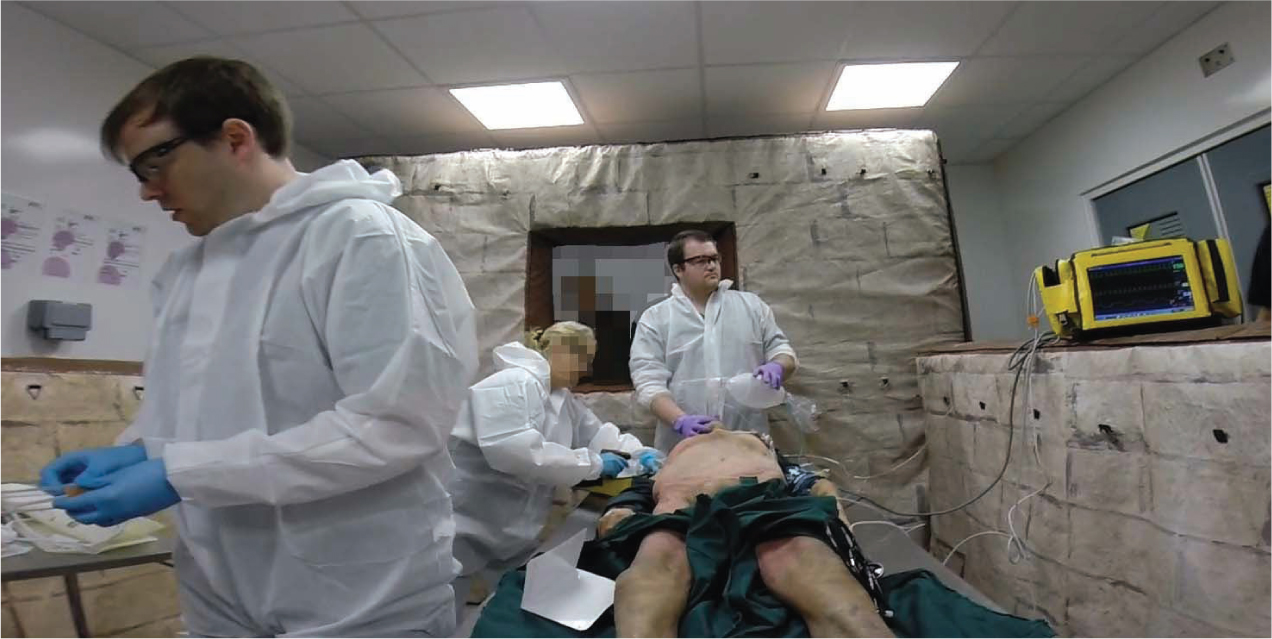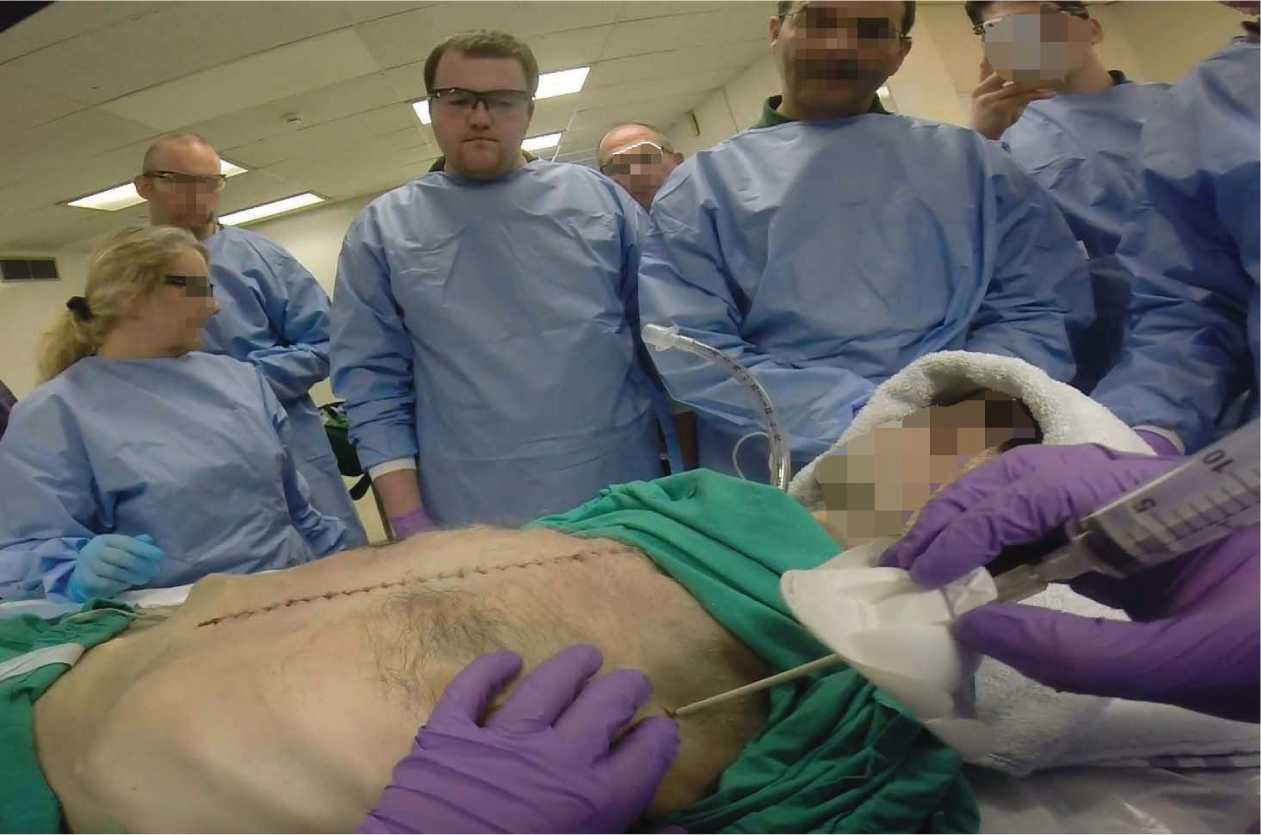Cadaveric skills courses are not a new invention, but previously these courses have focused on the training and education of surgeons and other medical doctors. Pre-hospital clinicians have seldom been able to access such courses, or they have attended as an observer. Major trauma accounts for a very small part of the pre-hospital workload, but clinicians will be expected to perform at the same high level regardless of exposure. I attended the pilot Pre-Hospital Advanced Cadaveric Skills (PHACTS) course in 2015 to improve my own clinical skills and to provide critical feedback to the teaching team delivering the course.
Who is it for?
The course is specific to trauma skills training in the pre-hospital setting and focuses on providing delegates with exposure to those skills that are rarely performed. As well as hands on skills, the course looks in detail at the human factors involved when caring for a major trauma patient and allows all delegates the opportunity to become the team leader.
Delegates were from varied professional backgrounds, including medical, nursing and paramedics with differing levels of seniority and experiences. The course is aimed at higher level pre-hospital practitioners (Level G and H) (Faculty of Pre-hospital Care, 2015); however, other participants may be considered at the discretion of the directing staff. Although not essential, some pre-reading on the anatomical structures involved in traumatic injuries and airway management would be advantageous.

Where is it held?
The course is held in Nottingham and delivered by an experienced team comprised of paramedics, paramedic educators, pre-hospital doctors and trauma surgeons.
How was it structured?
The course is held over two days, commencing at 08:30 hours until 19:30 hours on day one. The course begins with short tutorials on the phases of care and the primary survey in trauma. The morning ends with a series of manikin-based trauma simulations to allow the teams to work with each other and practice some technical and non-technical skills.
The afternoon session on day one transitions to a system specific review of trauma skills, including the first portion of the cadaveric sessions. Overview of the clinical skills is initially done through a didactic session, summarising indications and key technical points. Following this the group moves from the classroom into the cadaver lab and are taken through catastrophic haemorrhage control, airway management, breathing control and circulatory access skills. With four delegates per cadaver, each team is taught together and work through the various procedural skills. Instructors facilitate the sessions, with delegates encouraged to perform each technical skill, as well as working with an operational team approach. Particular skills focused upon during the afternoon included endotracheal intubation, video laryngoscopy, surgical airway, needle chest decompression, finger thoracostomy and intraossesous access. The instructors then guided the groups through the relevant anatomy and biomechanics of pre-hospital interventions. Through a thoracotomy approach the anatomy relating to thoracic trauma was explored, as well as discussing the indications and techniques of needle chest decompression. A variety of commercially available equipment sets were also demonstrated in the cadaver, to facilitate discussion. Day one closed with a summary recap and a briefing for day two.
Day two commenced at 08:30 hours with a question and answer session. Shortly after this, delegates went through two more manikin-based simulations to refine the technical and non-technical skills taught on day one. Debriefing was a core element of the course, with instructors taking every opportunity to engage in clinical discussion about patient management.
The remainder of day one involved team-based simulation exercises using cadaver casualties. The cadavers had real traumatic pathology that had to be identified with thorough patient assessment. Each scenario is designed to challenge the entire team, both from a diagnostic, procedural and clinical leadership perspective. As injuries were found the team would have to perform the correct intervention as would be done ‘for real’, as well as monitor physiological parameters for change in response to actions. Teams went through two rounds of cadaveric simulation exercises each. After each session, the team would go through a rapid ‘hot’ debrief by the directing staff conducting the exercise. This was followed by an educational debrief, conducted with the use of video recording to enable structured debriefing and was a real benefit of the course. Throughout the course there was the additional benefit of using the iSimuate™ monitoring devices which are designed specifically with high-fidelity immersive learning in mind and were versatile enough to be used with the cadavers.
Would you recommend the course?
For those interested in honing their trauma skills, advancing their clinical practice and experiencing immersive simulation with human cadavers, this course is guaranteed to impress. The knowledge and experience of the instructing team was excellent and structured debriefing provided great learning opportunities. With an instructor student ratio of 1:2, each delegate is guaranteed a supportive learning environment and focused input from a senior clinician.

For me, the course opened my eyes to the benefit of training and learning with cadaveric material compared with traditional manikin-based education. This course is not for everyone and places are strictly limited, but if you want to advance both your technical and non-technical skills for major trauma patients then you should attend this course.
How much is the course?
The course costs £1 000 per delegate. Team training packages are available, with observer positions available at no additional cost. Places are strictly limited and subject to course administration approval. Future courses are planned for June 2016 and October 2016.
Course provider
Ground Truth Medical Ltd. chris@groundtruthmedical.comwww.groundtruthmedical.com

